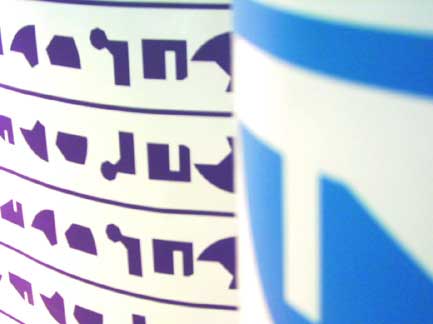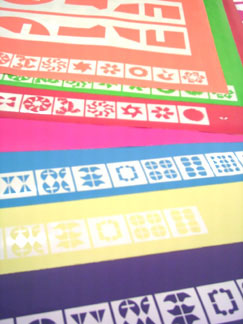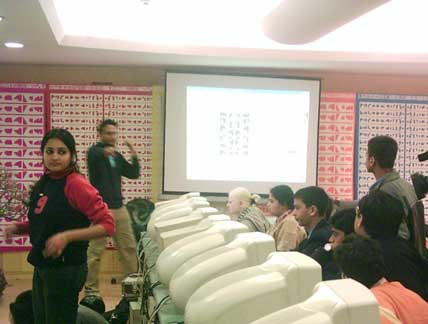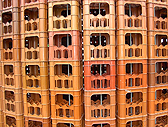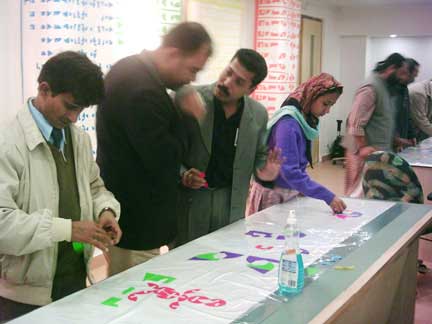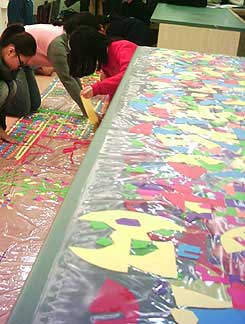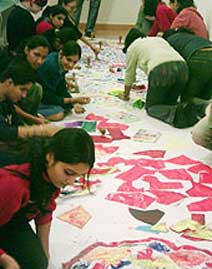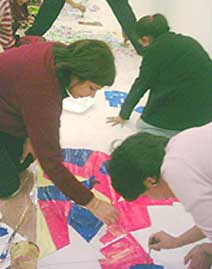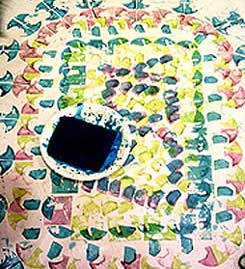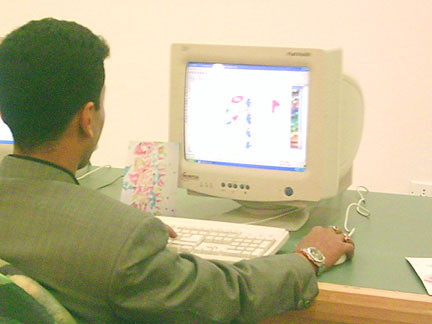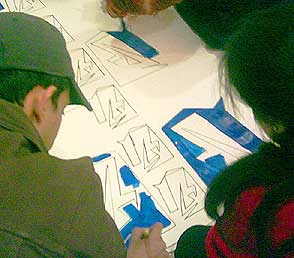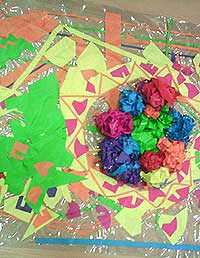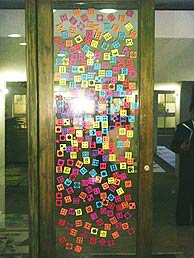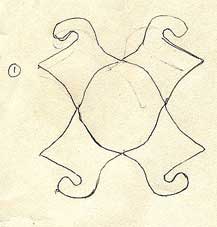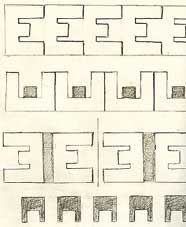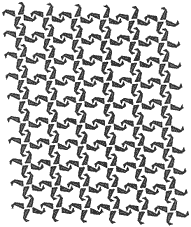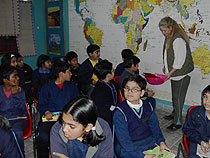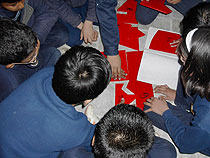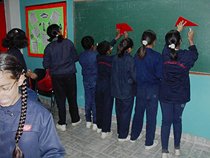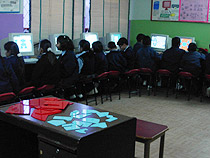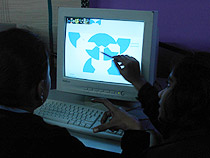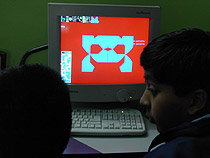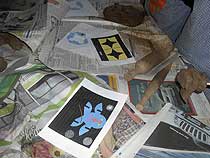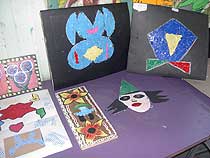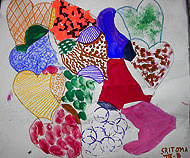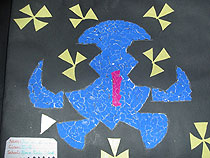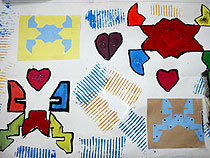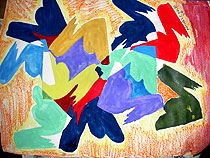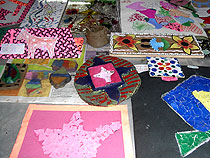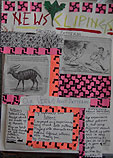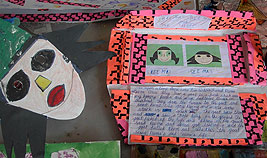|
|
|
|
| | Bhardwaj Classes | Bloom Public School | |
 |
| Lalit Kala Akademi |
| The one day workshop had a practical hands-on atmosphere, in which participants were exposed to interactive processes on many levels by playing and experimenting with digital and real materials. The participants got an insight into how design and visual constructions are created and evolved. They had the joy of playing and experimenting; and the benefit of learning and discovering through experience. |
 |
|
|
|
|
 |
| | Lalit Kala Akademi | Bloom Public School | ^ |
 |
| Bhardwaj Classes several sessions has been done with young students; preparing for art-, architectural or design studies all over India. Classes were conducted by Nikhil Bhardwaj & Leidi Haaijer. |
An introduction was given on the existence of pattern and structures. Students were invited to play with the provided perpex shapes in the first place by outlining the shapes and painting them.
After that they were asked to compose and glue the reworked shapes all together on a big sheet in a quick action. Purpose was to prevend the interference rationalism and just let intuition and feeling decide what to do. A sheet like a big carpet merged.
In the last session they were asked to create their own element, to play with it, composing patterns. |
|
 |
 |
 |
| |
Playful compositions appeared. |
|
| |
 |
 |
| Students exploring the possibilities of shapes and colours. |
|
| Newly designed patterns, starting from the element, compiling to pattern or structure. |
|
 |
| | Lalit Kala Akademi | Bhardwaj Classes | ^ |
 |
| Bloom Public School 4 sessions (2 hrs/session) has been done with a group of youngsters (8-11 yrs). Classes conducted by Leidi Haaijer. |
In the first session experiences are shared with the students on structures and patterns and the item 'element'.
Main questions appeared: where can we find structures and patterns? Is there a difference between them? And can we define these ? What are the elements of the patterns? After defining the program (Pliable Product) is presented by projection. Eager to play with the program we decided to make that happen in the second session. The children could play in teams and come to a design that could be realised in chosen material and techiniques (3 options offered). Finally the physical shapes were presented with which the children could become familiar.
After some hesitation they started to play and ideas grew. |
|
|
During the second session students could experiment with the programme. They started to compose, by using the PrtScr-button they transported their design to the programmes Paint, Word or PowerPoint where they continued reworking their design. During this process they had to decide which material to use to realize their design.
The 3 offered options:
- painting, on cardboard, wood, fabrics, tile or glass.
- collage, anykind of material could be glued on cardboard or wood
- 3D-modelling in clay
3D-modelling in clay had a great interest. Special attention was put to the fact that in that case they also had to think not only about the frontside but also about the other sides of the object. As the students were already familiar with Powerpoint and the choice of programme use was not restricted, some already started with making
a small presentation on patterns and structures (This input can be developped in a next workshopsituation). Sketches and final decisions were saved in My documents, as being used to. The general knowledge of these
kids with the use of the computer and some of the programs was remarkable. |
|
|
| Third session: translating the design into real material. Finally 3D-modelling turned out to be difficult; the results were mainly related to 2D, such as tile-like objects, or objects with only a front or backside. Just one student succeeded in a transformation to a 3D object. The results sofar mainly ended up as autonomous objects in clay or as a symbol on a surface. When patterns grew they were merely used as decoration around flowersmotives. Some interesting tryouts were done with the techniques the students were already familiar with. |
|
|
| During the fourth session the works were finished and some new possiblities restarted. The ones who had chosen 3D-modelling to start with wanted to go for collage now. In this session the students got more grip on the concept of the element, new shapes were made and they started to experiment more with known techniques. Some were able to leave the traditional flower motives behind. |
|
|
| Besides playing with elements and experimenting in graphic patternmaking some students ended up with results like a description for a screenplay with a mask and newsclippings on the item patterns and structures. |
|
|
 |
| ^ |
|



